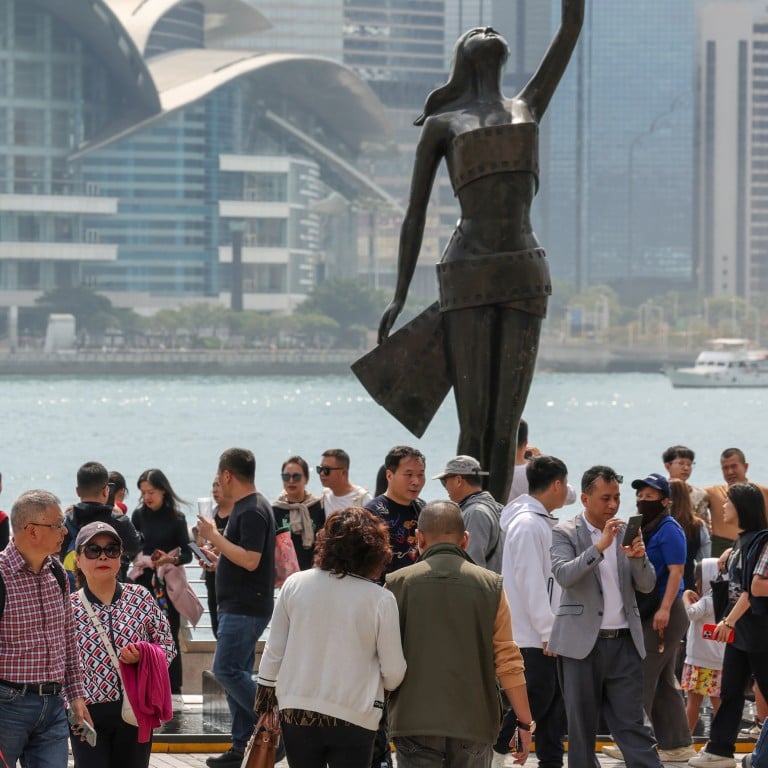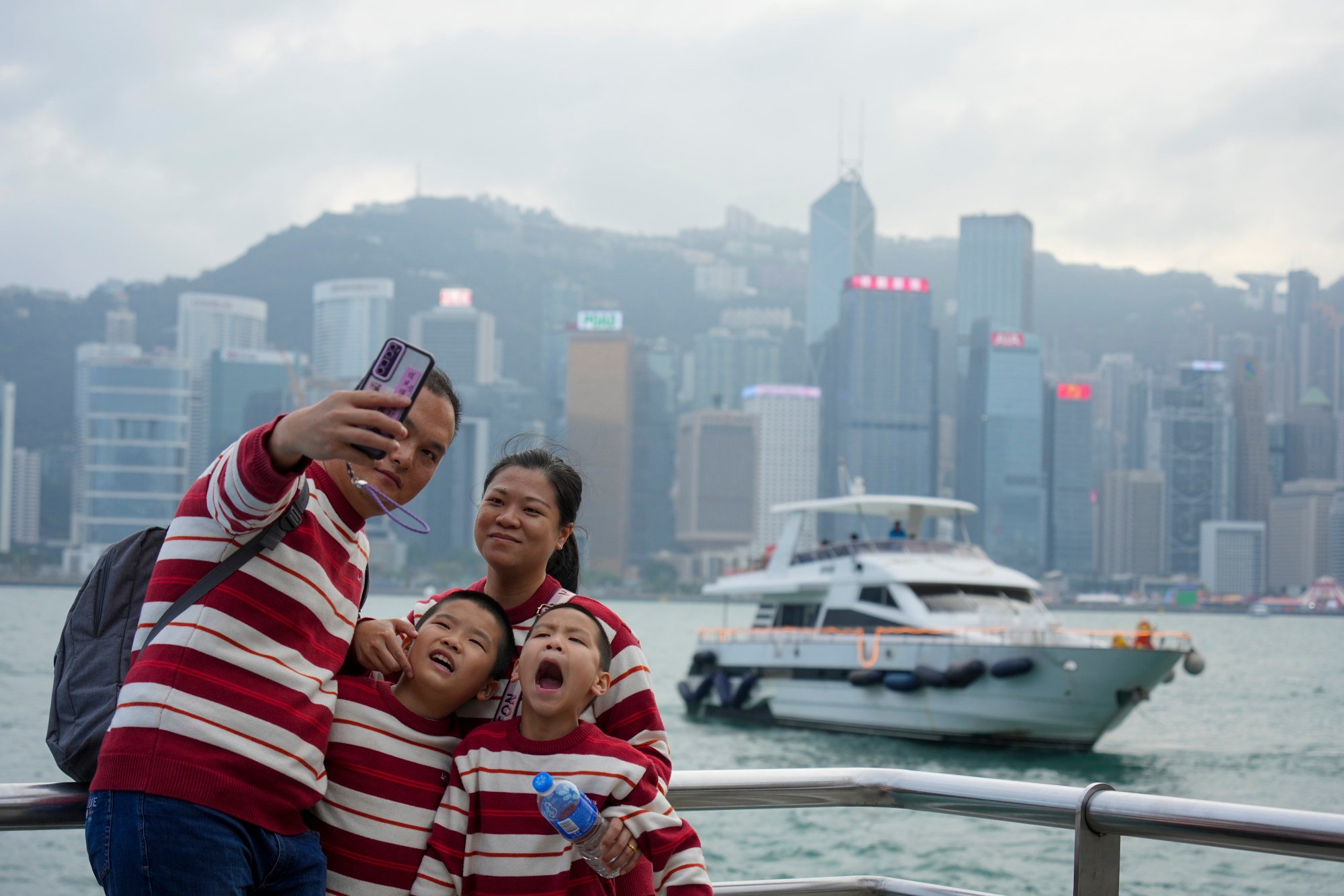
Explainer | What is the newly expanded solo traveller scheme and how will Hong Kong benefit? Analysts unsure over repeat of post-Sars economic, tourism boom
- Beijing to allow more mainland Chinese tourists to visit Hong Kong after adding Qingdao and Xian to list of eligible cities under solo traveller scheme
- First change to scheme since 2007 is part of efforts to revive tourism, but analysts caution over setting high expectations of swift economic impact
The initial move in July 2003, which allowed residents of certain mainland cities to visit Hong Kong on an individual basis rather than in tour groups, boosted the economy and tourism but also sparked controversy.
The Post examines the scheme’s evolution and assesses whether its strong economic impact will be repeated.

1. How did the Individual Visit Scheme come about?
During the outbreak of the severe acute respiratory syndrome (Sars) from March to June in 2003, Hong Kong’s economic growth was “abruptly derailed”, according to a government report for that year.
Inbound tourism and its related sectors were “badly shattered”, and in July, authorities introduced the Individual Visit Scheme, initially targeting residents of four cities in Guangdong province.
The scheme was quickly expanded to include major cities such as Guangzhou, Shenzhen, Beijing and Shanghai.
Prior to Friday’s announcement, the list of 49 mainland cities was last updated in 2007.
Free ice cream, tram and Star Ferry trips for Hong Kong’s ‘Art March’
2. How did Hong Kong’s economy benefit?
Hong Kong authorities said a “remarkable” economic turnaround in the third and fourth quarters of 2003 was driven by strong mainland visitor numbers.
According to official statistics, only 427,254 travellers came to the city in May 2003, a drop of 68 per cent year on year, while the hotel occupancy rate dived to 18 per cent from an annual average of 84 per cent in 2002.
Following the introduction of the scheme, tourism swiftly rebounded in August 2003 with 10 per cent year-on-year growth in inbound visitor numbers. In November, hotel occupancy exceeded 90 per cent.
Hong Kong leader welcomes move to expand solo traveller scheme to Xian, Qingdao
Around this time, mainland tourists started to account for most of the visitors to the city, from just under 30 per cent in 2000 to 56 per cent of the 21.8 million people who arrived in 2004.
The city welcomed a record 65.2 million tourists in 2018, 78.3 per cent of whom were from the mainland.
Legislative Council papers in 2012 gave a glimpse into the economic impact, showing that visitors from across the border pumped HK$178.6 billion into the city that year, and spending by those specifically under the individual traveller scheme created 110,000 jobs, accounting for 3.1 per cent of overall employment.
Hong Kong launches plan to turn Lau Fau Shan into technology, eco-tourism hub
3. What were the hits and misses of the scheme?
The rapid influx of mainland visitors with robust spending power pushed Hong Kong’s tourism and retail industry to unprecedented heights in the years following the scheme’s introduction.
But the uptick in visitors also strained infrastructure and raised tensions with locals.
Residents of border towns such as Sheung Shui and Tuen Mun complained of overcrowding and an increase in parallel traders crossing into the city several times a day to buy up daily necessities to sell on the mainland, prompting a series of demonstrations that started in 2012 and became increasingly violent over time.
Authorities rolled out measures to limit certain products that could be brought across the border such as baby milk formula, while also arresting hundreds of suspected parallel traders and scrapping a multiple-entry permit scheme for Shenzhen residents in 2015.

4. Why is the scheme being expanded now?
Hong Kong authorities are facing challenges in attracting high-spending mainland tourists post-Covid-19.
Those who do visit now increasingly prioritise cultural experiences over shopping, influenced by a weaker mainland economy and the relatively more expensive Hong Kong dollar.
Leading Hong Kong think tank unveils broad plan to sharpen city’s tourism edge
5. How much will Hong Kong benefit this time?
Economists have warned against setting expectations of a repeat, major economic impact.
Gary Ng Cheuk-yan, a senior economist at Natixis Corporate and Investment Bank, pointed to the issue of Hong Kong still being too expensive for many mainland visitors.
“I have reservations about seeing [the scheme] as something that can save the economy,” he said.
“It may attract more people to visit ... but if they find Hong Kong’s hotels too expensive, for example, they may end up choosing to spend the night in Shenzhen and come here for day trips instead. Our competition remains.”
But the addition to the scheme of Xian and Qingdao, which were both distant cities, would potentially benefit airlines, he said.
Associate Professor Lisa Wan Chun-ying of the school of hotel and tourism management at the Chinese University of Hong Kong also noted the changed spending habits.
Hong Kong airport ranks fourth for passenger traffic in Asia-Pacific region
“With the rapid development of the retail industry on the mainland, there are famous duty-free shops in Hainan, Shenzhen and other places. People from the mainland no longer have to come to Hong Kong for shopping,” she said.
“On the contrary, more tourists are pursuing leisure, experiential and Instagrammable consumption.”
She added that official figures showed the mainland had 474 million domestic tourists over the recent eight-day Lunar New Year holiday – a 19 per cent increase compared with the same period in 2019 – but average per capita consumption was down 10 per cent at 1,335 yuan (US$185).
“In other words, people from the mainland have reduced their spending,” she said.
6. What do mainlanders think?
Mainland internet users on popular social media platform Xiaohongshu gave lukewarm reactions to the expanded scheme, with some pointing out individual travel had always been possible even without the measure, since the “L” type group visit permit was available to all mainland residents, and its enforcement was loose.
Others lamented how it was “even easier to travel to Singapore” given the city state’s visa exemption agreement with the mainland starting on February 9.
